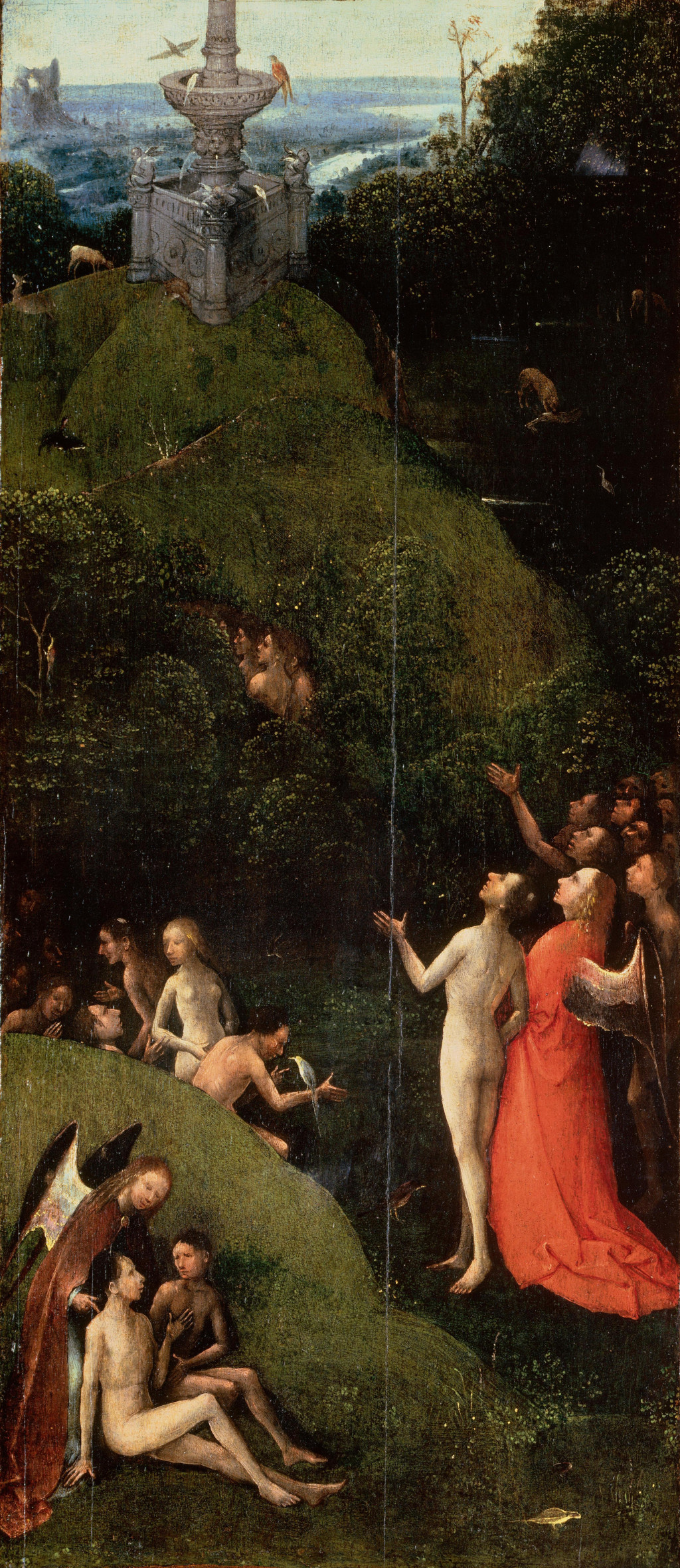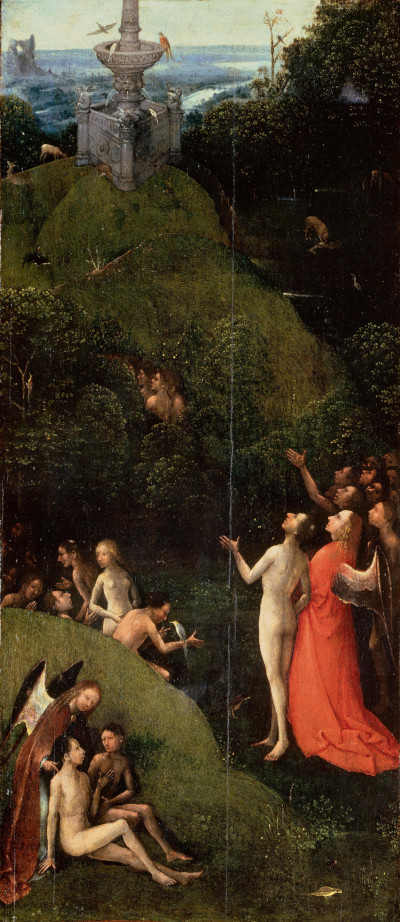Terrestrial Paradise by Hieronymus Bosch was completed in around 1490. It is one of four, alongside Ascent of the Blessed, Fall of the Damned into Hell and Hell.
Introduction
The artist regularly called upon religious content within his work and much of the time it was requested by his patrons. Bosch was also highly religious himself, and so was more than happy to tackle these types of themes, particularly when they brought so much life and emotion into his work, which suited his expressive style. Within this scene there are many figures dotted around, though none of the grotesque figures which we are particularly familiar with from his oeuvre. There is not a huge amount of information available on this series of paintings, which is why they hold such a wide date range of 1490 to around 1516. Indeed, the upper limit is only as it is because the artist died in 1516, otherwise it may have been an even wider range. Some scientific research has examined a number of Bosch paintings in recent years in order to narrow down some of these dates, but Terrestrial Paradise was not included in all of these experiments.
Description
This narrow artwork from around the late 15th century features a series of figures in the foreground, near the bottom of the composition. The majority of them stare into the sky above. Higher up we see a cityscape in the distance, with a number of birds relaxing by a water fountain. The rest of the scene is then covered in an abundance of nature, with trees, grassy hills and bushy trees. Specifically, the small piece of architecture refers to the Fountain of Life, and the overall scene captures the point at which the saved wash away their last remaining sins. Note how several angels stand in the foreground, whilst other figures of the Bible are also represented here. Terrestrial Paradise underlines the good mixture of skills possessed by Bosch, with cityscape, landscape and figurative art all combined here, along with considerable amounts of religious content as well. The style of the composition is also fairly unusual, and creative, with just a small window allowing us to see the landscape, when most artists would have allowed that to dominate. Despite the darker contrast which results from that decision, the tones of green ensure the mood is still fairly positive (as well as the colours used on both angels).
Size and Medium
Terrestrial Paradise measures 86.5 cm × 39.5 cm (34.1 in × 15.6 in). The entire series of four follow similar formats in order to fit together, when initially displayed back in the early 16th century. Bosch used oil on oak wood for all of these paintings, which is how he worked for most of his career. Van Eyck and a number of other artists were the first to use oils in their work, with Bosch following on in the next few generations after that. Over time many of their techniques would spread to Italy, replacing tempera and fresco work which had dominated in this European region prior to that. Bosch's own paintings could be several metres tall at their biggest, though this commission series was slightly smaller, allowing it to be moved around more easily. The artist may also not have been paid as much for the project, hence the smaller dimensions, although another interpretation may have been that the intended destination would not have been able to accomodate a larger size.
Location
This painting can be found at the Gallerie dell'Accademia in Venice, Italy. It is a key part of their permanent collection and so will generally be on display, other than for some rare occasions. Bosch himself remains one of the key names from the Northern Renaissance, and the overall Renaissance by extension. Cardinal Domenico Grimani from the late 15th century is believed to have acquired this piece for his own collection and over time it made its way over to this public gallery in Venice. The Gallerie dell'Accademia has offered these pieces as part of its permanent collection since around 2010, suggesting that they may have been here in a longterm loan previosuly. Few nations today would allow any of their prized art collections to come up for sale, because of the cultural value that they bring.
Large Image
See below for a larger image of Terrestrial Paradise, allowing you to enjoy some more of the detail added by Bosch all those years ago. The composition fits into two main sections, separated vertically into the top and bottom of the painting. The four items within the overall series all carry a similar layout, providing a striking consistency when hung together. Those looking for an even higher resolution image of this painting should check out some of the larger publications on this artist's career, which include an extensive catalogue raisonne that includes all drawings and paintings currently attributed to his hand.





